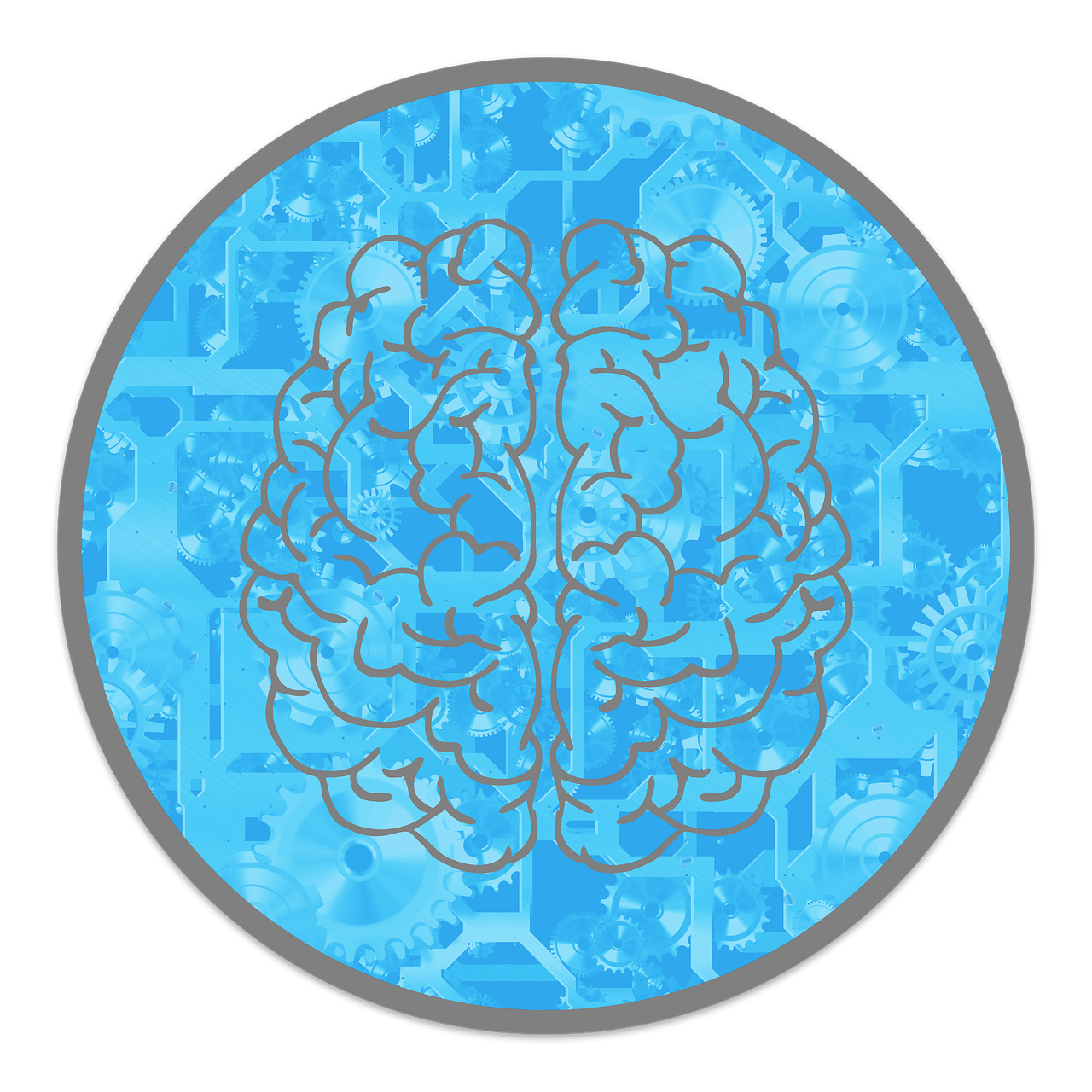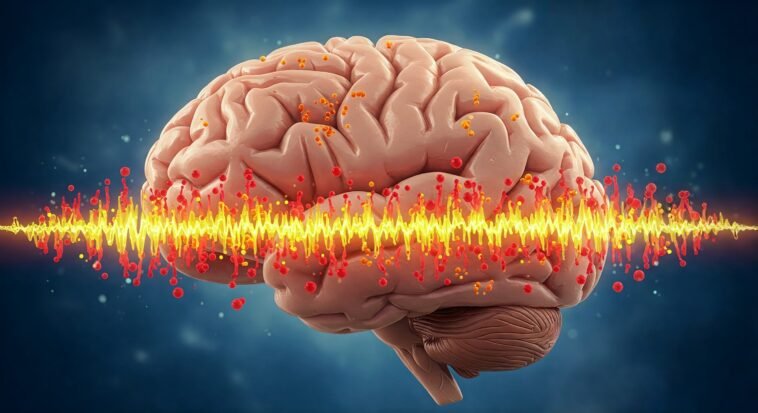
Why do you feel like a legend after a workout or laugh attack?
Blame (or thank) your endorphins — your brain’s own version of a “feel good” playlist.
Endorphins are your body’s natural painkillers and mood boosters.
Think of them as your inner hype crew, showing up when life gets tough — like after leg day or during a cringey group presentation.
In a world where stress is trendier than TikTok dances, we need natural ways to feel better.
Good news: you can trigger endorphins without meds or magic potions.
We’re talking real, science-backed hacks — and yes, some of them are actually fun (spoiler: laughing, dancing, chocolate… maybe even petting your cat like it’s royalty).
This guide is your cheat code to feeling better, naturally — no prescription, just good vibes.
What Are Endorphins?
The word endorphin comes from smashing together endogenous (which means “made inside your body”) and morphine (a powerful painkiller).
Basically, they’re natural chemicals your brain makes to help you feel good and block pain — kind of like your brain’s own version of Advil… but cooler.
Endorphins are made in your brain and nervous system, and when they’re released, they go full superhero mode:
- They numb pain like a Jedi using the Force.
- They boost your mood — cue the “runner’s high” or that post-laugh glow.
- They help you handle stress like a pro (without rage-quitting life).
According to Harvard Medical School, endorphins lock onto the same brain receptors as opioids — but without the sketchy side effects or Netflix docuseries-level addiction drama.
So yeah, your body basically has a secret stash of feel-good chemicals.
No prescription, just pure science magic.
Why Endorphins Matter for Mental Health
Endorphins aren’t just feel-good sidekicks — they’re total game-changers for your mental health.
When your brain pumps out more of them, amazing things start to happen:
- Less anxiety and depression: Think of endorphins like your brain’s natural “Do Not Disturb” mode — they help quiet the mental noise.
- Better stress control: Life throws drama? Endorphins help you handle it without flipping tables.
- Stronger immune system: Yep, feeling good can actually help your body fight off sick-day villains.
- Improved sleep: More endorphins = better zzz’s. Your brain gets the chill it needs, no midnight scrolling required.
So yeah, endorphins are basically your brain’s version of a wellness influencer — but real, free, and way less annoying.

How to Boost Endorphins Naturally
No need for pricey pills or magic potions — there are plenty of legit ways to get your endorphins flowing like a pro.
Here are some easy, science-approved hacks:
1. Exercise (especially cardio and HIIT)
You’ve probably heard it a million times, but it’s true: exercise is the #1 way to unlock your brain’s endorphin stash.
Running, swimming, cycling, and HIIT workouts are like the VIP club for endorphins.
Even doing something simple, like 20-30 minutes of aerobic activity, can send your mood soaring.
Pro tip: It’s not about going full “beast mode” once a week — consistency is key.
A brisk walk every day beats a single insane workout. Your brain’s more like “slow and steady wins the race” than “fast and furious.”
2. Laugh more often
Laughter isn’t just for funny TikToks. It’s a legit endorphin booster!
Group laughter is especially powerful because it releases opioid-like chemicals in your brain (yep, your brain’s own feel-good drug).
Want to laugh it up? Try:
- Attending a comedy show (laughter and snacks, yes please)
- Watching a funny movie with friends (who doesn’t love a Netflix comedy night?)
- Joining a laughter yoga group (it’s a thing, and it’s as hilarious as it sounds)
3. Eat endorphin-boosting foods
You can literally eat your way to a better mood.
Certain foods can help crank up your endorphin levels and other feel-good chemicals, like serotonin (aka your brain’s chill pill).
Here’s what to munch on for an instant happiness boost:
- Dark chocolate: It has something called phenylethylamine and flavonoids, which are fancy words for “good stuff” that can help boost endorphins.
- Spicy foods: Ever notice how hot wings or chili can make you sweat, and then feel oddly good? That’s because they trigger pain receptors, which makes your brain release endorphins to cool you down.
- Bananas: These little yellow powerhouses are packed with vitamin B6, which helps keep serotonin and endorphins in check.
- Omega-3 foods: Think salmon, chia seeds, and other brain-boosting superfoods. They help keep your brain chemistry in balance.
4. Engage in creative activities
Getting creative isn’t just for art class — it’s a secret hack for boosting both endorphins and dopamine (the brain’s reward chemical).
Whether you’re an artist or just like to doodle on your notebook during class, here’s what to try:
- Painting or drawing: Tap into your inner artist and get those creative juices flowing.
- Playing a musical instrument: Pick up that guitar or play some piano — music is a major endorphin magnet.
- Writing or journaling: Get your thoughts on paper, whether it’s a personal diary or an epic novel about your favorite characters.
- DIY crafts: Turn a pile of random stuff into a masterpiece. Bonus points if you make something weirdly functional.
These activities light up your brain’s “reward center,” giving you a sense of fulfillment that sticks around long after you’ve put the brush down or finished your jam session.
So, go ahead, get your creative groove on!
5. Meditation and deep breathing
No, meditation isn’t just for monks or your friend who’s always posting #Zen vibes on Instagram.
It can actually help boost your endorphins, too — especially if you stick with it.
A study in Brain and Cognition found that mindfulness meditation increases brain waves that are linked to good moods and relaxation.
So, it’s not all about “finding your inner peace” — it’s about getting that feel-good chemical flow.
6. Sunlight and vitamin D
Getting some good ol’ sunshine is basically like giving your body an endorphin shot — but without the needles.
Sunlight triggers the release of both endorphins and serotonin (the brain’s chill hormone).
It’s like the ultimate combo for lifting your mood and regulating your sleep schedule.
Try to aim for 15-30 minutes of sunlight every day (without sunscreen — but don’t go overboard, we’re not trying to look like a lobster).
And if you live in a place where the sun goes MIA in the winter, you can still stay sunny with a light therapy box. It’s like a personal sunbeam, even when it’s cloudy.
7. Listening to music
Music isn’t just for jamming out in the car or blasting at a party — it’s a legit endorphin booster.
Your favorite tunes can trigger your brain’s “reward system,” making you feel all sorts of happy.
Fast-paced music is perfect for workouts — think of it as your personal hype playlist that helps you push through the last set.
Slow, calming music is great for winding down and processing those emotions (hello, chill playlist for bedtime).
A 2011 study found that music-induced chills (you know, the goosebumps you get during a song that hits you just right) are linked to endorphin activity in the brain.
So yes, music can literally give you the feels.
8. Acupuncture and massage
You don’t need to be in a spa to get endorphins flowing.
Physical touch therapies like massage and acupuncture can work wonders for your brain and body.
- Massage: Not only does it feel amazing, but it also helps reduce cortisol and boosts endorphins — making you feel like you just had a mini-vacation.
- Acupuncture: Yep, those little needles aren’t just for show. They stimulate your nervous system and activate endorphin pathways, helping with pain and anxiety.

Endorphins vs. Other “Feel-Good” Chemicals
While endorphins get the spotlight, they’re just one piece of the “happiness chemical” puzzle, which includes:
| Chemical | Role | How to Boost It |
| Endorphins | Natural painkiller, creates euphoria |
Exercise, laughter, spicy food
|
| Dopamine | Motivation, reward, pleasure |
Achieving goals, praise, music
|
| Serotonin | Mood stability, satisfaction |
Sunlight, exercise, gratitude
|
| Oxytocin | Bonding, love, trust |
Physical touch, socializing, pets
|
Together, these neurotransmitters form the chemical foundation of well-being.
Potential Signs of Low Endorphin Levels
If your endorphins are MIA, it might show up in a few not-so-fun ways:
- Chronic pain or inflammation: Your body might hurt more than usual — endorphins usually help block pain.
- Anxiety and depressive symptoms: Feeling off emotionally? Low endorphins could be a factor.
- Fatigue or low energy: Low endorphins can leave you feeling drained, like your energy bar is stuck on empty.
- Low stress tolerance: Little things set you off? Low endorphins can make stress feel more intense.
- Addictive behaviors: When endorphins are low, your brain may crave temporary “highs” — like sugar, alcohol, or risky thrill-seeking.
While you can’t exactly measure your endorphins like a blood test (bummer, right?), if you notice these signs sticking around, it could mean your brain’s feel-good chemicals are out of balance.
How Long Does It Take to Feel the Effects?
Good news: You don’t have to wait forever to start feeling those sweet endorphins!
Some boosts are super quick:
Quickest effects:
- Exercise: A few minutes into that jog or dance party, and your mood’s already leveling up.
- Laughter: That funny meme or comedy show? Instant endorphin rush.
- Spicy food: The heat kicks in, and your body’s like, “Yep, I’m good now.”
Long-term benefits:
- Meditation: Stick with it for a while, and you’ll start noticing a calmer, happier you over time.
- Social bonding: Hanging with friends, chatting, and sharing laughs adds up, boosting those feel-good vibes in the long run.
- Creative activities: Whether it’s painting or writing, the more you do it, the more you’ll feel like you’re living your best life.

Conclusion: Make Endorphins Part of Your Daily Routine
Stress is everywhere, but luckily, your brain has a secret weapon: endorphins.
By adding simple activities — like exercise, laughing, or jamming to your favorite songs — you can naturally trigger these feel-good chemicals and boost your mood.
It’s like having your own personal happiness playlist.
So, make endorphins part of your daily routine and turn stress into something you can handle.
Your brain will thank you, and you’ll be feeling awesome in no time!
FAQs
No. Unlike drugs, endorphins are naturally regulated by your body and do not create harmful dependencies.
Extremely high levels (usually from drug interaction or disease) can cause issues, but naturally boosted levels are considered safe and beneficial.
While some supplements (like omega-3s or vitamin B6) support brain function, the best way to boost endorphins is through lifestyle habits.



